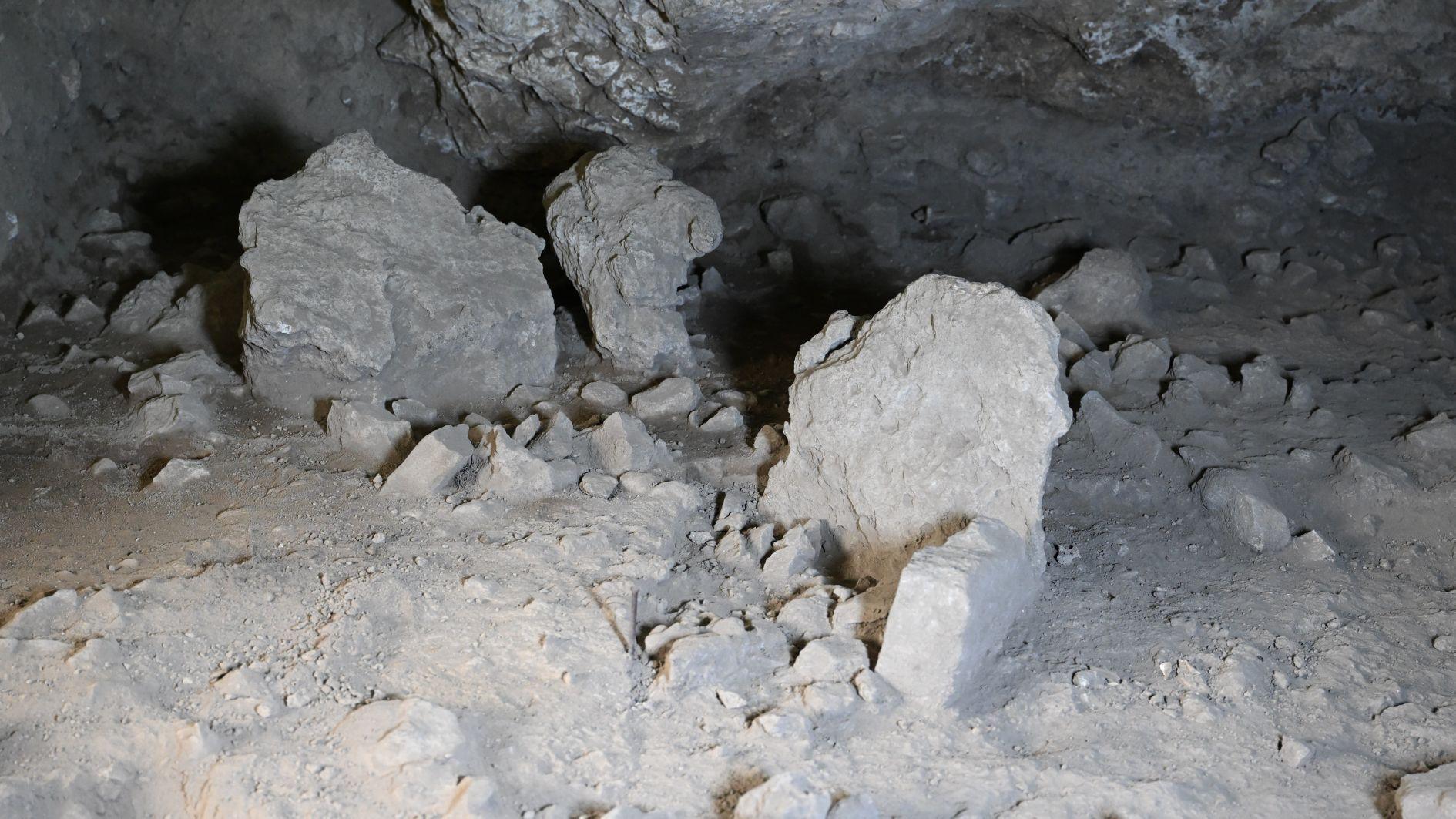
Excavations that have been ongoing since 2007 in Direkli Cave, located in the Döngel neighborhood of Kahramanmaraş’s Onikişubat district, have revealed a fifth rectangular-shaped tomb.
Cevdet Merih Erek, professor at Ankara Hacı Bayram Veli University’s Archaeology Department and head of the Direkli Cave excavations, said that the excavation work has continued uninterrupted for 19 years.
He said this year’s work began in the area they call the “cemetery,” where four other tombs had previously been found. Within just 20 days, the team reached the fifth tomb.
“The boundaries of this tomb, like the others, were again surrounded by flat stones. We have only uncovered the northwest edge so far, and excavation continues on the southeast side. We have not yet reached the full extent of the tomb because our work proceeds very slowly,” Erek explained.
The tomb was built by placing flat stones vertically and supporting them with other stones to prevent collapse, he noted.
Although the full skeleton has not yet been reached, some human bone fragments were found inside.
“The tomb was prepared on a flat surface without digging. For this reason, we think its top was also covered with flat stones, not soil, as in the others. The human skeleton has not yet been uncovered, but among the dense bone remains around it, we believe there are some human bones, although an anthropologist has not yet examined them,” he said.
Excavations will continue in front of the western wall of the cave, an area referred to as the cemetery. “This year, our target is to work in about eight grid squares, down to the 10th archaeological level. Stratigraphically, we can date this level to about 14,000 years ago. So, it is possible to say this tomb dates back around 14,000 years,” he added.
Erek said this discovery will allow researchers to better understand how people of the time connected with their deceased. He noted that these people never abandoned their dead but wanted to remain in spatial contact with them.
“Similar examples exist in earlier periods, such as the Upper Paleolithic, but in the Epipaleolithic period, we see these burials framed in a more organized way, with boundaries made of stones and covered with stone slabs instead of soil. This shows us that they did not want to distance themselves from their dead and sought to maintain a spatial connection. There is no soil fill inside these tombs; they were built directly on flat surfaces, sometimes with a stone base and surrounded with angular stones,” he explained.
Artifacts such as beads and bone spoons have also been found inside the tombs, which Erek said reflect that the people of the time did not separate death from their living world.